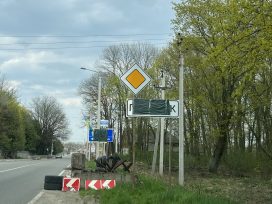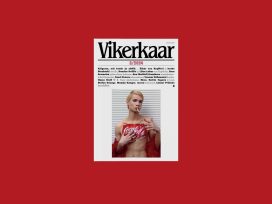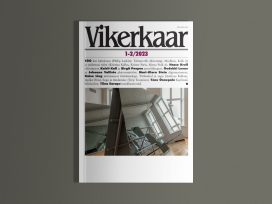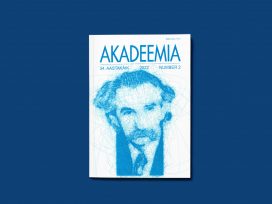Changes to the Estonian media have been constant, rapid and radical since 1989. Today the private media in Estonia are dominated by a few large companies, and in this respect the picture is similar to elsewhere in Europe. Nevertheless, Estonia’s size (population 1.4 million) means that its media landscape also differs markedly from those of larger national societies. Circulation figures are tiny and owners remain heavily dependent on advertising revenue. In pursuit of the market, even the quality publications have moved closer to tabloid style and content; they have also been profoundly affected by the comment- and blog-driven approach of their Internet publications.
For over ten years now, the Estonian print media has been dominated by two conglomerates: Eesti Meedia, owned by the Norwegian company Schibsted, and Ekspress Grupp, majority owned by the Estonian Hans H. Luik. Between them, they control all the major newspapers and most of the general interest magazines – social, women’s, home and family, and similar journals. In addition, there are three significant publishing houses: Bonnier of Sweden, which owns the business paper Äripäev; SA Kultuurileht, owned by the Estonian state, which brings together the cultural and academic journals Looming, Vikerkaar, Akadeemia, Kunst.ee, Sirp and others; and Yhtyneet Kuvalehdet’s Finnish-owned Ühinenud Ajakirjad AS, which has been importing its own publications into Estonia as well as Cosmopolitan and Marie Claire. Finally, there are a number of minor publishers of local papers or special interest journals.
The newspapers with the largest print runs are the dailies Postimees – Estonia’s oldest paper – and Õhtuleht, a tabloid. Both have print runs between 60 000 and 70 000. Another national daily, Päevaleht, prints 35 000 to 36 000 copies. The circulations of the weekly Eesti Ekspress and Maaleht are consistently between 40 000 and 50 000. Most local papers have circulations of less than 10 000. Over the past ten years, circulation has seen an average drop of 7 per cent; in 2009, this rose to 12 per cent. The only exception to this is Maaleht. Data on the circulation of the leading journals is vague; that of women’s, family and home journals fluctuates between 15 000 and 40 000, that of cultural journals between 1000 and 2000.
Most Estonian papers have until now been published in full on the Internet free of charge in the hope that profits would be generated by advertising. As in most countries, this model proved unsuccessful and the economic crisis has killed it off. The larger papers now exclude much of their print content and plan to charge for archive material.
The Russian-language media in Estonia is small, serving the 400 000 Russian or Russian-speaking population. The two dailies, Vesti Dnya and Molodyozh Estonii, were both casualties of the economic crisis. Of the three weeklies, Den za Dnyom (established in 1991) and Vesti Nedeli (1995) were merged into a single paper in 2006 and now appear as Den za Dnyom. Its coverage is mostly sensational. MK-Estoniya was launched in 2004, and is made up of 50 per cent Estonian material and 50 per cent from the Russian Moskovskiy Komsomolets and has a print run between 10 000 and 13 000. In addition, there is the Russian-language edition of Postimees, roughly half of which is made up of translations from the Estonian-language edition, and the other half of original material; the print run is around 10 000. In northeast Estonia there are also several Russian-language local papers. But the Russian-language press in Estonia is not a paying concern; in practice, Estonia’s Russian speakers watch Russian television channels, read papers published in Russia and form their opinions on the basis of the Russian media.
Television and radio are divided between the public service broadcaster Eesti Rahvusringhääling (Estonian Public Broadcasting) and a number of privately owned channels. The former has two television channels plus four Estonian-language radio stations and one Russian-language station. Two of the more significant private television channels, one of which belongs to Eesti Meedia are typical entertainment channels, showing films, imported series and news of a more sensational nature. A number of commercial radio stations offer a mix of music, news and entertainment. The only private station that offers serious programming is Raadio Kuku. LSL Trio, which runs three Estonian-language and two Russian-language stations is part-owned by Eesti Meedia.
Money and the market
The driving force of the Estonian press since the early-1990s has been the struggle for money and markets. During perestroika, around 350 short-lived small newspapers sprang up in addition to Maaleht (1987), Eesti Ekspress (1989) and Äripäev (1989), the first paper to be partially foreign-owned. The old state-wide national papers quietly started to change ownership at the same time. Initially most of them came into the ownership of their editors, but by 1995 they were in private hands.
Despite the extensive media consolidation of 1995-1998 that led to the present dominance of the two conglomerates Eesti Meedia and Ekspress Grupp, market competition grew ever fiercer; by the Millennium balance sheets made grim reading. Money had been squandered by the bucket load; only the weeklies and some of the journals were in profit yet neither of the groups showed any intention of giving up the battle. The result was an historic agreement between Marieberg-Luik and Schibsted in 2000, creating the jointly run tabloid SL Õhtuleht (later Õhtuleht) and the merged Ajakirjade Kirjastus (Press Publications). By the end of 2001, Luik had bought back Marieberg’s share in the company, Schibsted became sole owner of Postimees and in 2007 the Ekspress Grupp bought the hitherto independently-owned Maaleht.
This system remained in place until 2009 when the economic crisis hit the print media particularly badly. Advertising income fell by around 40 per cent and journals fared even worse. The use of free Internet versions of publications increased readership but failed to raise revenue; advertising on the Internet accounts for barely 10 per cent of advertising turnover and is in the process of disappearing completely. Estonian newspapers are in the process of attempting to charge for the use of their online versions.
Form and content
In Soviet times an Estonian newspaper was a four-page broadsheet whose content was largely politically determined and in which the announcement of cultural events substituted for advertising. During perestroika, news items began to appear but in the main these consisted of over-long stories on previously forbidden themes and a daunting number of documents, declarations and the like. As before, papers remained organs of collective agitation and propaganda, but now they were propagating nationalism and independence.
Fundamental changes in the content of newspapers came about in the early-1990s when the European model was adopted. The principal objective was accurate, objective, balanced reporting; opinion and fact were kept apart and opinion pieces became a distinctive feature. This model was further developed in the second half of the decade.
What does the Estonian press write about? It has consistently been very Estonian-centred with domestic politics and economy, local problems, crime and so on taking centre stage. There is a good deal on official corruption, sport, culture and entertainment. Despite growing demands for more and better foreign reporting, coverage of foreign news is superficial and, apart from that dealing with and reacting to Russian affairs, sparse. Culture is another area of dispute between managers and proprietors, and the reading public. In the wake of perestroika, the new private media were determinedly culture-centred. Each paper had a large cultural supplement that imported fashions to Estonia and was clearly distinct from mere entertainment.
The era of these supplements was over by the late-1990s. Lack of money was not the only reason; they became victims of the growing demand for entertainment. The change is reflected in the storm that blew up in November 1999 when Postimees proposed to close its cultural supplement Kultuur and replace it with a weekend supplement largely devoid of cultural content. Rank-and-file journalists lined up to support the continuation of serious cultural coverage; on the other side were the managers whose main concern was money. In recent years, serious weekly culture supplements have made a comeback.
When the Estonian press took on the concept of a quality press modelled on that of the West, in particular that of the UK, it also incorporated the notion of the press as the watchdog of society, the Fourth Estate. Added to this was the idea, going back to the period of national awakening in the mid-nineteenth century, of the Estonian press as an integral part of the nation’s culture. Here, the journalist is a teacher and to some extent a guide of the people, while editors are its chief ideologues.
Another factor that influenced the development of the press was the fact that Estonia was the only member of the Soviet Union to have training for journalists that was not a part of the Party School. The department of journalism at the University of Tartu was initially part of the department of Estonian philology, becoming independent in the mid-1970s. The founder of Estonian education for journalists, Professor Juhan Peegel, was himself a scholar of folk poetry and a writer. His fierce Estonian patriotism, strong sense of ethics and his concept of the media as a cultural activity and journalists as “leaders of the nation” shaped the development of the press. A third important factor was that even during perestroika the models of the western press were being taught at the University of Tartu. These moved rapidly into practical press production, as students found leading positions in the new press. However by the end of the century, the “commodity” ideology had won the day and journalists became mere paid employees. This process was hastened by the consolidation of ownership and, in particular, the arrival of foreign owners, for whom the notion of the press as a cultural entity in Estonian terms was inconceivable.
Journalists, hierarchy and ideology
In the early-1990s, most of the older generation of journalists had departed into politics, business or retirement, leaving the field open to a new generation who lacked the professional experience and broad knowledge of their predecessors. In 1988, 12 per cent of journalists were under 30, in 1995 it was 40 per cent. In 1988, 25 per cent of journalists had less than five years’ experience, by 1995 the figure had risen to 51 per cent. Today, the leading editors come from this generation, and their journalists are their contemporaries; the novices have become media stars.
For the first time in its history, the Estonian media is free of party control. This is not to say it is spared constant accusations of party bias or that papers and journalists do not have their own ideological preferences. In general, the press demonstrates a mild, but evident, rightwing bias. The most sharply rightwing is Äripäev, which has positioned itself as the defender of the liberal economy and supports the Reform Party as the central representative of the free market economy. Leftwing views are only voiced to any extent by the tabloid Õhtuleht. More significantly, however, no paper supports the socialists – but none opposes them either. The only party almost universally opposed by the press is the Centre Party, a populist party with somewhat confused views: in the European Parliament they belong to a Liberal grouping, but in Estonia tend to the Left.
Newspapers in Estonia are open to the most diverse views; while there are few influential political columnists, the views of distinguished politicians appear regularly. A good indicator of this variety of opinion is the “war” over the removal of the Bronze Soldier. Even though those Estonians who defended the monument, or criticised the government’s actions, received censure and threats in Internet commentaries, they were guaranteed free speech in the media. The media itself took up different positions during the “war”. The Internet version of Postimees was somewhat nationalist, while the print version remained more equivocal. Eesti Päevaleht was noticeably more cautious and Eesti Ekspress tended to offer critical analysis.
Against this background it is important to bear in mind that Estonian society is like a small city of 1 million people. There are no great social hierarchies in Estonia and class is not a factor in social relations as it is, for instance, in Sweden or Finland. People are mutually bound by ties of friendship, kinship, school background and the like. As a result, personal sympathies and antipathies are sometimes far more influential than political views. That is how it has been for a century-and-a-half. In Estonian politics, personal chemistry, the quality of individual relationships, is at least as important as ideological views. The same applies to journalists: personal relationships between the top journalists are important. Moreover, there are few journalists of a populist bent. What is strongest is a liberal ideology that places a high value on the individual and is consistent with the general trend in Estonian society. But these rightwing journalists are highly critical of rightwing parties and their leaders. The result is that while individuals are much criticised, ideologies are not.
For example, Hans Luik, the owner of the Ekspress Grupp, has been closely associated with national-conservative circles, but his papers do not reflect this. On the contrary, his main paper, Eesti Ekspress, plays down nationalist views. The director of Eesti Meedia and chief editor of Postimees, Mart Kadastik, is a long-time personal friend of Prime Minister Andrus Ansip, the leader of the Reform Party. In November 1999, the political parties of Estonia wrote a letter to the parent company Schibsted claiming that Postimees was a Reform Party paper. This gave rise to a long polemic that led nowhere. Postimees carries sharp criticisms of both the party and Ansip personally, but when it comes to elections or other politically important events, quietly takes up a firm position against the opponents of the Reform Party. One could say that party affiliation comes through when it really matters.
Tabloid versus quality
The central dilemma of the Estonian press has been the boundary between the “quality” and the “tabloid” press. The tabloid press in Estonia is young. Between 1989 and 1993 several tabloids were launched. They had tiny circulations and many were short-lived. Serious changes only came about in the second half of the decade. In 1996, Postimees set up the weekly gossip magazine Kroonika, which was for a few years the most readable publication on the market. In 1997, Luik turned the former Tallinn local paper Õhtuleht into a tabloid and in 1999 Schibsted did the same with the relatively gossipy daily Sõnumileht. These publications created the Estonian tabloid press.
A tabloid newspaper and a gossip magazine demand news about characters who wish to expose their private lives to the public gaze. Such a society was unknown in Estonia. Kroonika was the first to present images of the previously hidden private lives of the political and financial elite, and to create public figures who were no more than a product of the press. But it was not until the merger that created Õhtuleht that a suitable model for a tabloid newspaper was found and Õhtuleht secured highest circulation of any daily. How? Õhtuleht has two faces. One is turned towards human-interest or soft news stories and opinion pieces that fit its subscription status – at present two-thirds of its purchasers are subscribers; the other favours a gossipy news and entertainment sheet that is sold as a “number two” paper in kiosks.
Compared to its British equivalent, the Estonian tabloid press is toothless; what is more pertinent is the tabloidization of the print media generally. In the mid-1990s, papers were pulled between three poles. First, the journalists themselves wanted to be the watchdogs of society and foster truly analytical journalism and culture; their most important task was the exposure of political and official corruption. The best articles by journalists could topple ministers and cause government crises. While there was much talk of “buying off” journalists, there was no evidence to prove the allegations; complaints came mainly from those exposed for corruption. The influence and independence of Estonia’s top journalists is considerable and before elections politicians constantly try to make use of the press by supplying editors with revelations about their opponents. Given the political complexion of the country, the press is rapidly becoming a fourth estate ideologically attuned to the Right.
From the other side money exerted its pull as powerful factor influencing the content of the papers. With the tiny available market, advertising sales were critical and advertising became the sacred cow capable of forcing out editorial content. The dependence on the Communist Party in Soviet-era newspapers was gradually replaced by a strong dependence on advertisers; the collective propagandist became a collective salesman.
The third pull factor was readers’ expectations. By the second half of the 1990s, Estonian readers were clearly weary of the rapid changes in society, the dragging of politicians through the mud and the continual revelations of corruption, and wanted more entertainment. Newspaper managers were ever more inclined to the view that a tabloid style brings in readers who in turn bring in cash. An effort was made to sell news with sex; pictures of corpses and lurid details were constantly appearing, justified by the claim that “life is like that”. Only with the approval of a press code of ethics in 1997 were there any positive changes; a decade later the Internet media have yet to catch up with the code.
Nevertheless, the adoption of the tabloid style did nothing to raise circulation and succeeded only in reducing reader confidence in the papers in question to the same level as public confidence in politicians. According to a survey by the Department of Journalism at the University of Tartu in 2005, 56 per cent of people did not trust the printed media; only 36 per cent did. The survey showed that in terms of content, apart from objections to too much advertising, readers were specifically annoyed by two things in particular:
1) Unethical and unprofessional journalism characterised by factual errors; partial and haphazard coverage of events; inconsistency of headlines with content; bias; the predominance of the author’s personal opinion.
2) Sensationalism characterised by the revelation of the intimate details of private lives; scandal and emphasis on the negative and excessive attention to prominent personalities.
The loss of confidence in the press inevitably resulted in loss of revenue from sales and, more seriously, a decline in the role of journalists as the Fourth Estate or watchdog on society. Where investigative journalism continues, it offers no guarantee of sales. In 2008, for instance, Estonia’s leading opinion paper Eesti Ekspress, won every possible press award, but the paper lost many more readers than others.
It is evident from the above that the media ideal, based on the classic western European model, lasted only a few years at the end of the past century. It used to be said that in a democratic press, facts were sacred while comment was free, and vice versa in the Soviet press. Now the Estonian media have reached the point where both are free. Surveys show that the connection between printed word and reality has become ever more fragile. Instead of facts, what is increasingly offered is an assemblage of alleged quotes and vague hearsay. Reporters spend more time on the Internet than out in the field and the boundaries between comment and news has grown so blurred that there will soon be no point in making the distinction.
The Internet and the end of the information age
Estonia has been a more highly “wired” society than most of its EU neighbours for some time, as evidenced by its e-banks, e-government, e-elections and so on. Internet versions of Estonian papers took shape as early as 1995-1996. Initially, these simply reproduced online the print version of the paper. By the end of the century, separate news for the Internet was being produced and Internet portals were created: a mixture of news, online comment, forum sites, chat rooms, games, online shopping and other activities. Estonia’s most famous portal, Delfi created in 1999, allowed readers to comment on various events and stories, as well as providing articles written expressly to provoke comment. Intended to create a new level of collective mind, it became a collective lavatory wall on which everyone and everything was aggressively criticised.
Internet publications took on their present form midway through the present decade and their influence on the print media has been dramatic. They have broken down the conventional divisions between different subjects and make use of an aggressive colloquial language considered unsuitable on paper. Stories on the Internet are steadily becoming like oral dialogues. Whereas a story on paper is a finished product, a story on the Internet is a mixture of product and process, which may change several times after publication. If the story on paper is a monologue, the story on the Internet is a dialogue with the reader. The result is a text consisting of different versions, none of which is final, none of which is trustworthy. This in turn leads to the notion that the most important thing is to compete with other papers for speed. An Internet paper in Estonia is not daily, or hourly, but minute by minute.
Newspapers conventionally cover the same stories as each other and continue to do so as long as they remain newsworthy. This uniformity has reached new levels. The important thing for a tabloid newspaper is what was on television the night before. The Internet version of Postimees duplicates word for word the ETV news with pictures. On paper and on the Internet stories are identical. While this recycling makes economic sense, the repetition of lies and defamation is increasingly likely and further erodes public trust.
The biggest change in Estonian journalism has been the advent of readers’ comment and opinion. The opinion piece on paper has always been the work of the expert, the decision-maker, the opinion-leader. Not everyone had the requisite qualifications – logic, analytical skills and ethical bent – to write it. On the Internet this has been replaced by the opinion blog and, ever more frequently, by the anonymous commentary attached to a story appearing in an Internet paper. The Internet commentary has destroyed the old boundaries between those authorised to state their views in public and those not. While this may seem democratic, a large proportion of the anonymous ideological commentaries come from tiny watchdog groups made up of junior politicians sitting in party offices. This has changed the commentary into a new tool of anonymous political manipulation.
At the same time, the commentary has also destroyed the boundaries between what is an opinion piece and what is not. Both blogs and Internet commentaries in the Estonian media are principally the expressions of feeling and opinion without any legal or ethical control. Moderation of the commentaries has been minimal, with the result that a torrent of defamatory comment – racist, nationalist and the like – has had free reign. There has been much debate about the responsibility for such commentaries. In 2009, there was a significant court decision against a portal for publishing defamatory material and at much the same time, the Newspapers’ Association adopted a code of good practice. This specified that Internet commentary was not the responsibility of the parent publication.
Selection of news for paper versions used to be based on “news value” – impact, conflict, proximity, and so on. Now, however, Estonian Internet journalism is starting to speak of new criteria that might be called “comment-value”. What is newsworthy and what is comment-worthy may sometimes be the same, more often however it is not. What is important, however, is that in the selection of Internet news stories, a preference for comment-worthiness dominates. The result is stories that differ considerably from the classic models of both quality news and its tabloid counterpart. Their function is to arouse feelings, not the tears and laughter of the tabloid press, rather anger and indignation. In a word, this is not entertainment, but journalism that plays on the emotions and that fundamentally alters democracy as a whole.






